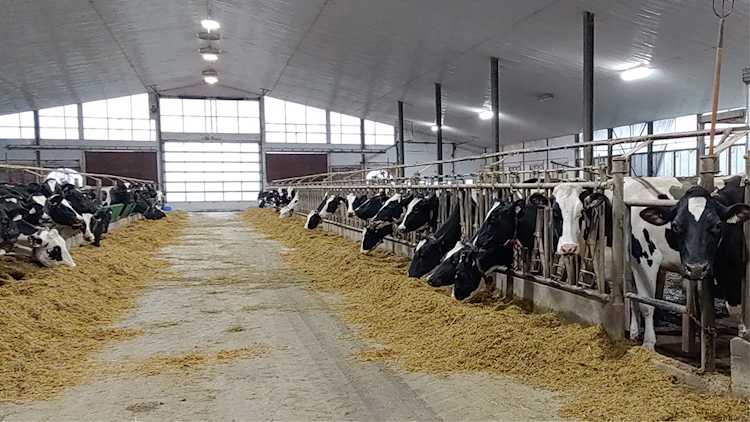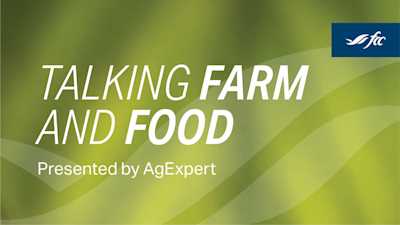Innovative farming: How big picture thinking builds long-term sustainability

Quebec dairy and cash crop farmer Fanny Delisle takes a big-picture approach to her farm operation.
Combining her diverse educational background in biology, land planning, business and people management, she’s successfully implemented regenerative practices and work inclusivity policies across five different agriculture enterprises of her farm operation. Her focus is on building a truly sustainable business that supports the wider agriculture sector, landscape and people working in it, both now and for the future.
Investing now for benefits later
Delisle’s background drove a variety of initiatives to improve the environmental impact of her farm businesses. This includes tree planting and the improvement of riparian area. An on-farm biodigester generating power from methane is also in the works, and Delisle has implemented a slew of regenerative production practices, such as cover cropping, a more diverse crop rotation and low tillage.
The overarching idea, says Delisle, is to make investments now that will pay off environmentally while, at the same time, making financial sense.
“We often talk about sustainable development while forgetting the fact that we have to be able to finance it,” Delisle says. “We have to be profitable; we have to be environmental, and then we have to think about the social aspect.”
The balance comes from measured growth in each area every year.
“We do a little bit in every direction every year,” she says.
From a social point of view, Delisle says she used to work on projects such as improving the playground at her children’s school when they were young. Now, she opens her farm gate to visits from school children and patiently answers all their questions about dairy farming and agriculture, acknowledging it’s an industry the public largely knows nothing about. Teaching the students about farming also sets the stage for the future since she considers each young visitor a potential future employee.
“They’re super engaged,” Delisle says. “I want to collaborate in the advancement of agriculture. That’s also part of the social advancement – ensuring there are employees who are going to be trained to come and do great work with us. Education is super important.”
On the environmental front, she includes a budget line for environmental improvement but notes that not every environmental improvement comes with a high price tag.
She points out that poplar trees beside the barn create shade to help cool the barn and increase cow comfort during the summer. By digging up poplars from elsewhere on the property and transplanting them to beside the barn, trees establishment is faster and less expensive than buying trees from a nursery.
Delisle weighs investments – of time and money – with what should be done versus what’s required to be done, focusing on “very low investment in time and money for a huge result.”
“The cost/effectiveness ratio is high,” Delisle explains. “It shows that there are possible environmental practices that are accessible to everyone.”
For example, increased shade for the cows is important yet optional. Yet when environmental regulations prevent farm expansion because of the proximity of a neighbouring home, finding a solution to meet the regulations can be unavoidable and costly.
It’s all part of a wider holistic approach to tying environmental improvements and economic sustainability with succession planning and empowerment.
Fostering creativity and knowledge-sharing
When it comes to empowering staff, Delisle’s approach to team building starts with character rather than qualifications and technical proficiency.
“This approach has created an inclusive work environment with a diverse team of workers from different nationalities: foreign workers, exchange students, trainees and neurodivergent people. This diversity fosters creativity and a dynamic working atmosphere,” Delisle says. This results in a notable boost in knowledge-sharing and creativity.
Whether focused on environment, social matters or business governance, her approach supports local agriculture both now and in future.
Delisle also established La Cambrousse Project, an incubator program where the core driver is to enable farmers to more effectively respond to evolving challenges and develop a more diverse agricultural ecosystem in the process.
She engages with new farmers in knowledge-sharing, personalized coaching and even in-the-field work. For example, says Delisle, new farmers are invited to establish themselves on her farmland and participate in a collaborative farming group. One mentee turned a portion of land unsuitable for field crops into space for garlic production.
The project, for new farmers and citizens, also includes addressing environmental concerns, removing hurdles through land access, the development of local markets for local products, as well as social, leisure and cultural activities. The project’s goals also include providing free access to outdoor spaces and farming education while creating a link between agriculture and the community.
With a focus on environment, social matters and business governance, Delisle reiterates her approach to business management intends to support local agriculture both now and in future.
Article by: Matt McIntosh

While management styles differ, there are key traits that successful farm managers share. Learn which key skills can help take you from good to great in the management department.
